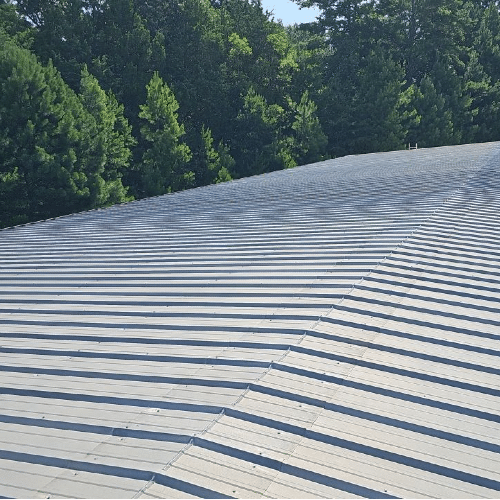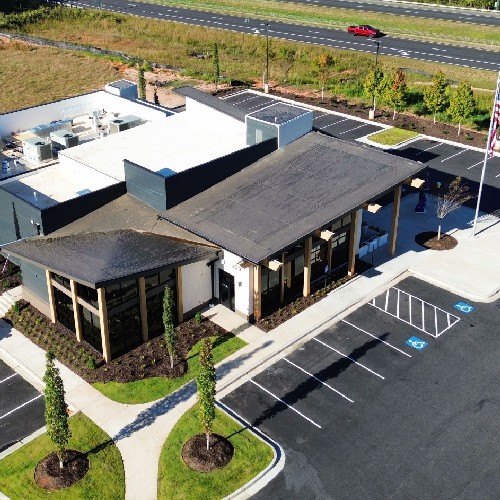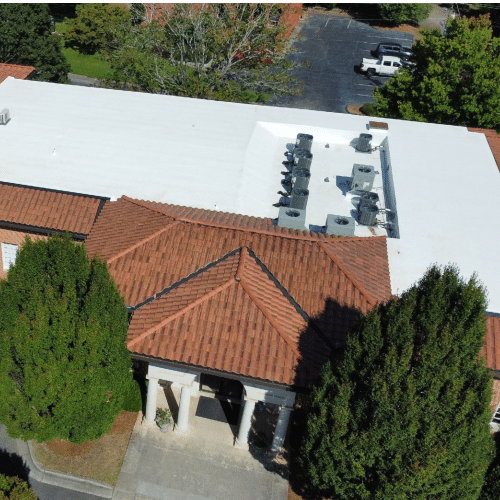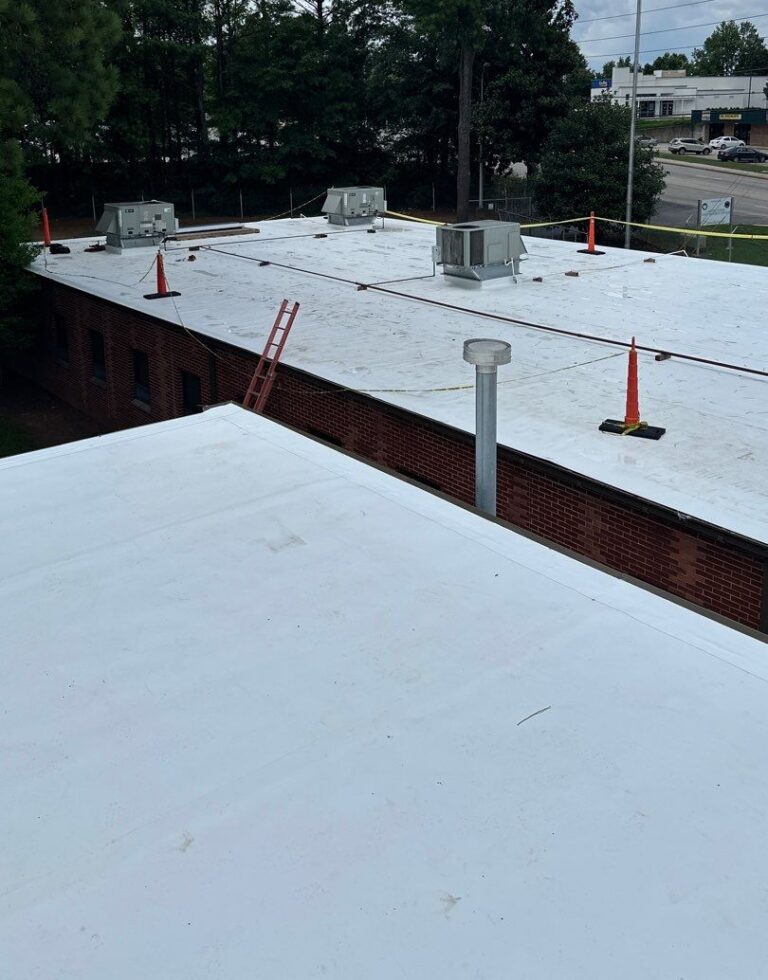This Commercial Roofing Guide Outlines the Most Common Roof Types
- Metal roofing
- EPDM
- TPO
- PVC
Metal Roofing
Metal roofing has surged in popularity within both residential and commercial roofing spaces. There’s a whole lot to like about metal roofing: it’s extremely durable, it can last for half a century or longer, and it’s generally energy efficient and sustainable.
However, metal roofing also tends to be on the more expensive side compared to other options. Commercial property owners will have to determine if this upfront investment is worth the long-term benefits of a metal roof.
Advantages:
- Lifespan (40–70 years or longer)
- Resistance to all types of damage
- Energy efficiency
- Sustainability (recyclable)
Disadvantages:
- Upfront cost to install
- Requires an experienced roofer
- May become dented, detracting from appearance


EPDM
- Highly affordable
- Straightforward to install
- Fairly long-lasting
- May be damaged by heat and UV rays
- Can shrink over time
- Not chemical resistant
PVC
- Relatively affordable
- Straightforward to install
- Light color produces a cooling effect
- Excellent chemical resistance
- Slightly more expensive than other single-ply options
- Less environmentally friendly
- Shorter lifespan compared to other materials (20–30 years)


TPO
Last but not least, TPO (short for thermoplastic polyolefin) is the most recent addition to the family of single-ply membrane commercial roof types, seeing first use in the 1990s. TPO products were originally intended to provide the combined advantages of both EPDM and PVC, and they’ve lived up to that promise fairly well.
TPO is typically light in color, resistant to impact damage, chemically resistant, slightly cheaper than PVC, and stands up very well against moisture thanks to its heat-welded seams. It is also more environmentally friendly than PVC. That said, if improperly installed, those seams can be a weak point.
Additionally, TPO was not able to improve upon the expected lifespan of PVC, as it typically lasts around 20–30 years as well.
Advantages:
- Relatively affordable
- Extremely watertight
- Good chemical resistance
- Light color produces a cooling effect
Disadvantages:
- Requires an experienced roofer to ensure proper sealing
- Shorter lifespan compared to other materials (20–30 years)
Skyline Contracting: Gainesville’s Commercial Roofing Experts
Here at Skyline Contracting, our experienced commercial roofers have experience installing a wide range of roof types. Rather than pushing one single roofing system, our team works with our customers to understand their needs and make recommendations to suit their budget, their business, and the design of their property.
If you’re in need of a commercial roof replacement, we’re Gainesville’s leading experts in all things commercial roofing. Reach out to our team to schedule an inspection!
